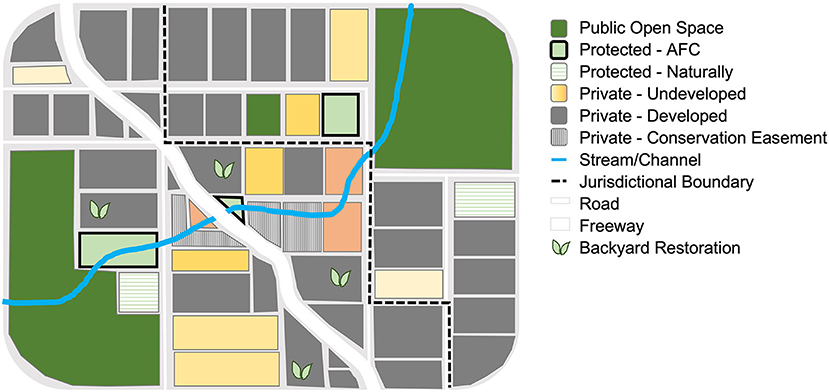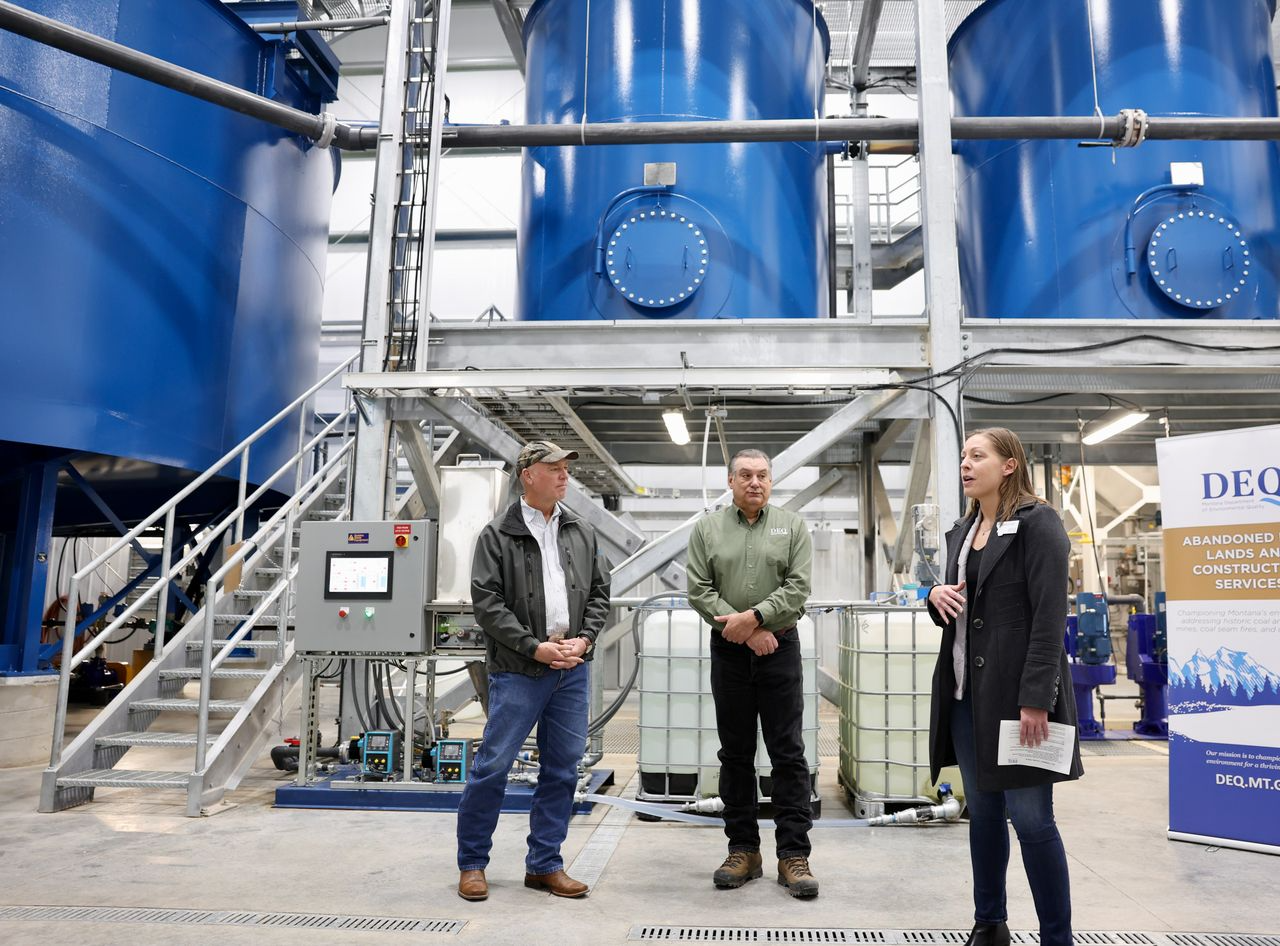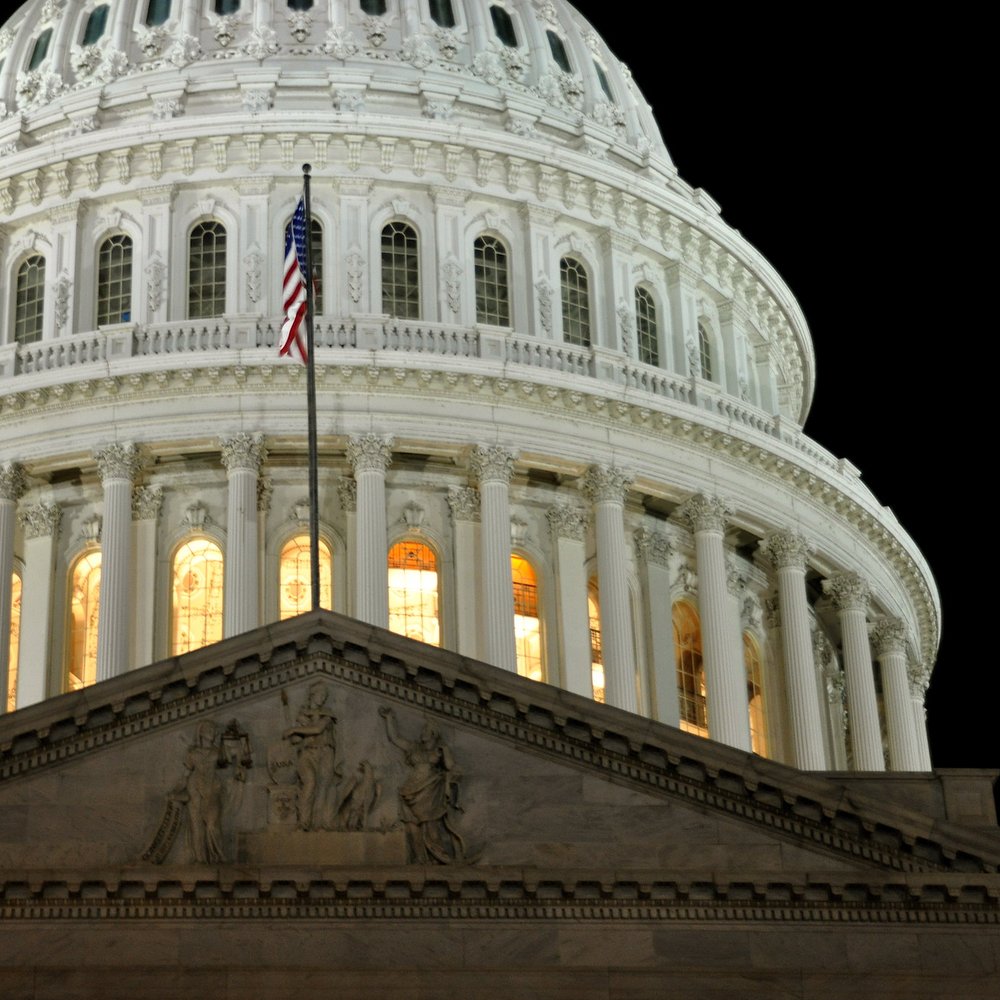Navigating the Global Landscape of Green Building Policies – Urban Land Magazine

Global Trends in Green Building Policy and Alignment with Sustainable Development Goals
Introduction: The Evolving Regulatory Landscape for Sustainable Real Estate
A global analysis of Environmental, Social, and Governance (ESG) policies indicates a significant shift towards asset-level environmental regulation, despite uncertainty in corporate-level reporting standards. While international bodies work towards a global baseline for sustainability disclosure, municipal and national governments are increasingly mandating practical actions to accelerate decarbonization. These actions directly support the achievement of several United Nations Sustainable Development Goals (SDGs), particularly those concerning climate action, sustainable cities, and clean energy.
Analysis of Regulatory Trends and SDG Contributions
Global Reporting Standards vs. Local-Level Action
There is an observable divergence between the pace of international corporate reporting standardization and the implementation of tangible, asset-focused environmental regulations. This presents both challenges and opportunities for the global real estate sector.
- Corporate Reporting Uncertainty: The translation of frameworks like the IFRS S1 and S2 Sustainability Disclosure Standards into unified international policy remains slow, with ongoing debates surrounding regulations in the United States and the European Union.
- Local Regulatory Momentum: In contrast, local authorities are advancing policies that demand concrete outcomes, moving beyond reporting to implementation. This localized approach is critical for making progress on the following SDGs:
- SDG 7 (Affordable and Clean Energy): Policies mandating energy efficiency and fossil fuel-free heating directly contribute to increasing the share of clean energy.
- SDG 11 (Sustainable Cities and Communities): Regulations for net-zero buildings, EV charging, and climate adaptation make urban centers more sustainable, inclusive, and resilient.
- SDG 12 (Responsible Consumption and Production): Requirements addressing embodied carbon in construction promote sustainable production patterns.
- SDG 13 (Climate Action): All green building regulations are fundamental tools for climate change mitigation and adaptation at the city and building level.
Key Regional Policy Developments Supporting the SDGs
The ULI Greenprint and Arup Global Green Building Policy Dashboard tracks regulations across 81 jurisdictions, revealing a clear trend towards stricter environmental performance standards for buildings. Recent updates highlight significant progress aligned with the SDGs.
- United States:
- Boston: The approval of Net Zero Carbon (NZC) Zoning for new large projects directly targets SDG 13 (Climate Action) by mandating emissions reductions.
- Cambridge: The Fossil Free Ordinance for new construction and major renovations advances SDG 7 (Affordable and Clean Energy) by eliminating fossil fuel use in buildings.
- Europe:
- Germany: A plan to phase out fossil fuels from heating by 2045 is a major step towards achieving SDG 7 and SDG 13.
- European Union: The amended Energy Performance of Buildings Directive, which sets renovation targets for the least efficient buildings, supports SDG 7, SDG 9 (Industry, Innovation, and Infrastructure), and SDG 11 by upgrading building stock for higher energy performance.
- Asia Pacific:
- Shanghai: New Green Building Regulations requiring certification for new builds and upgrades for existing ones contribute to SDG 9 and SDG 11.
- Singapore: The Mandatory Energy Improvement regime compels energy-intensive buildings to improve efficiency, directly supporting SDG 7 and SDG 12.
Addressing Regulatory Complexity Through Strategic Partnerships
The Imperative for Policy Harmonization
The complexity of navigating diverse local regulations presents a significant challenge for real estate companies with geographically varied portfolios. The industry is increasingly advocating for greater harmonization and consistency in sustainability legislation. Such alignment is crucial for easing the regulatory burden and increasing investor confidence, thereby unlocking the private finance needed to achieve climate goals, a key principle of SDG 17 (Partnerships for the Goals).
Industry-Led Initiatives as a Catalyst for Change
In response to these challenges, industry-led collaborations are emerging to foster standardization.
- Aligning Real Estate Sustainability Indicators (ARESI): This working group is tackling ambiguity in building-related Key Performance Indicators (KPIs) within the EU and UK.
- Objective: By harmonizing KPIs and leveraging existing legislation, ARESI aims to streamline regulatory burdens and provide the clarity needed for efficient capital allocation towards climate transition projects. This collaborative effort exemplifies SDG 17 in action, bringing together stakeholders to create effective solutions.
Conclusion and Forward Outlook
The global real estate sector operates within a dynamic and challenging regulatory environment. While uncertainty persists at the highest levels of corporate reporting, decisive action at the local level is driving meaningful progress toward the Sustainable Development Goals. This landscape presents an opportunity for the industry to move beyond compliance and proactively engage with policymakers. Through strategic partnerships, as encouraged by SDG 17, the real estate industry can help shape practical, effective, and harmonized regulatory frameworks. Such collaboration is essential to accelerate the transition to a sustainable built environment and ensure significant contributions to SDG 13 (Climate Action), SDG 11 (Sustainable Cities and Communities), and SDG 7 (Affordable and Clean Energy).
Analysis of Sustainable Development Goals in the Article
1. Which SDGs are addressed or connected to the issues highlighted in the article?
The article discusses several issues related to environmental policy, sustainable urban development, and corporate responsibility, which directly connect to the following Sustainable Development Goals (SDGs):
- SDG 7: Affordable and Clean Energy: The article’s focus on phasing out fossil fuels, promoting energy efficiency in buildings, and introducing requirements for electric vehicle (EV) charging facilities directly relates to ensuring access to affordable, reliable, sustainable, and modern energy for all.
- SDG 11: Sustainable Cities and Communities: The core theme of the article is green building regulations within cities. It highlights policies like Net Zero Carbon Zoning, fossil fuel-free ordinances, and climate adaptation measures, all of which are central to making cities and human settlements inclusive, safe, resilient, and sustainable.
- SDG 12: Responsible Consumption and Production: The discussion on corporate-level ESG reporting, the need for a global baseline for sustainability reporting (IFRS S1 and S2), and industry-led initiatives to harmonize Key Performance Indicators (KPIs) aligns with the goal of ensuring sustainable consumption and production patterns.
- SDG 13: Climate Action: The article is fundamentally about taking urgent action to combat climate change and its impacts. It details numerous policies aimed at decarbonization, reducing emissions from buildings (net-zero standards, embodied carbon), and enhancing climate resiliency, which are key components of climate action.
- SDG 17: Partnerships for the Goals: The article explicitly mentions partnerships as a crucial element for progress. The collaboration between ULI Greenprint and Arup to create the policy dashboard, the industry-led ARESI working group, and the call for the real estate industry to engage with policymakers all exemplify the spirit of strengthening the means of implementation and revitalizing global partnerships for sustainable development.
2. What specific targets under those SDGs can be identified based on the article’s content?
Based on the policies and initiatives described, several specific SDG targets can be identified:
- Target 7.2: By 2030, increase substantially the share of renewable energy in the global energy mix.
- Explanation: This target is addressed by policies mentioned in the article, such as the German government’s plan to “phase out fossil fuels from heating by January 2045” and the city of Cambridge’s “Fossil Free Ordinance for all new construction.” These initiatives directly aim to replace fossil fuel-based energy with cleaner alternatives.
- Target 7.3: By 2030, double the global rate of improvement in energy efficiency.
- Explanation: The article highlights multiple regulations focused on energy efficiency. The EU’s amended “Energy Performance of Buildings Directive” sets “renovation targets for the bloc’s worst-performing buildings,” and Singapore’s “Mandatory Energy Improvement regime” requires energy-intensive buildings to “undergo audits and undertake efficiency improvements.”
- Target 11.6: By 2030, reduce the adverse per capita environmental impact of cities, including by paying special attention to air quality and municipal and other waste management.
- Explanation: This target is relevant through the focus on reducing the environmental footprint of buildings. Boston’s “Net Zero Carbon (NZC) Zoning” introduces a “net-zero emissions standard for new large project filings,” and Shanghai’s regulations include “certification requirements for new buildings.” These policies directly aim to mitigate the environmental impact of urban infrastructure.
- Target 11.b: By 2030, substantially increase the number of cities and human settlements adopting and implementing integrated policies and plans towards inclusion, resource efficiency, mitigation and adaptation to climate change, resilience to disasters.
- Explanation: The article explicitly states that there is “increased climate resiliency planning from locations across the globe” and that jurisdictions have introduced requirements on “climate adaptation measures.” The Global Green Building Policy Dashboard itself tracks these policies across 81 jurisdictions, showing a clear trend of cities adopting integrated plans for climate mitigation and adaptation.
- Target 12.6: Encourage companies, especially large and transnational companies, to adopt sustainable practices and to integrate sustainability information into their reporting cycle.
- Explanation: The article opens by discussing the evolution of “corporate-level ESG reporting” and the introduction of “IFRS S1 and S2 Sustainability Disclosure Standards” which aim for a “global baseline for sustainability reporting.” This directly encourages companies to integrate sustainability into their formal reporting.
- Target 13.2: Integrate climate change measures into national policies, strategies and planning.
- Explanation: The entire article is a testament to this target being implemented at various government levels. It details how “green building regulations continue to gain momentum among local authorities” and provides examples of national policies, such as the German government’s plan to phase out fossil fuels, and city-level strategies, like those in Boston and Shanghai, which integrate climate action into their legal and zoning frameworks.
- Target 17.17: Encourage and promote effective public, public-private and civil society partnerships, building on the experience and resourcing strategies of partnerships.
- Explanation: The article provides clear examples of such partnerships. The “ULI Greenprint partnered with global consultancy firm Arup” to create the dashboard. Furthermore, the ARESI working group is described as a pivotal “industry-led initiative” that “tackles the fragmentation and ambiguity in key sustainability indicators.” The article concludes by encouraging the real estate industry to “proactively engage with policymakers,” promoting public-private collaboration.
3. Are there any indicators mentioned or implied in the article that can be used to measure progress towards the identified targets?
Yes, the article mentions or implies several indicators that can be used to track progress:
- Number of jurisdictions with green building regulations: The article mentions that the “Global Green Building Policy Dashboard” summarizes regulations across “81 jurisdictions.” This number serves as a direct indicator for tracking the adoption of climate-related policies (relevant to Target 11.b and 13.2).
- Building performance standards and certification levels: The article refers to Boston’s “net-zero emissions standard” and Shanghai’s “certification requirements for new buildings.” Progress can be measured by the percentage of new and existing buildings meeting these specific standards or achieving certification (relevant to Target 7.3 and 11.6).
- Harmonization of sustainability KPIs: The ARESI initiative’s goal to “harmonise key performance indicators” is mentioned. An indicator of progress would be the rate of adoption of these harmonized KPIs by companies in their ESG reports (relevant to Target 12.6).
- Rate of fossil fuel phase-out in buildings: Germany’s plan to “phase out fossil fuels from heating by January 2045” and Cambridge’s “Fossil Free Ordinance” imply a measurable indicator: the percentage of new and existing buildings that are fossil fuel-free (relevant to Target 7.2).
- Number of buildings undergoing energy efficiency upgrades: Singapore’s policy requires “existing buildings that are consistently energy-intensive to undergo audits and undertake efficiency improvements.” The number of buildings audited and improved under this regime is a clear indicator of progress (relevant to Target 7.3).
- Number and effectiveness of multi-stakeholder partnerships: The existence of the “ULI Greenprint and Arup” partnership and the “ARESI working group” are themselves indicators. Progress could be measured by the number of such partnerships formed and the tangible outputs they produce, such as policy tools or harmonized standards (relevant to Target 17.17).
4. Table of SDGs, Targets, and Indicators
| SDGs | Targets | Indicators Identified in the Article |
|---|---|---|
| SDG 7: Affordable and Clean Energy | 7.2: Increase the share of renewable energy. 7.3: Improve energy efficiency. |
|
| SDG 11: Sustainable Cities and Communities | 11.6: Reduce the environmental impact of cities. 11.b: Increase cities adopting policies for climate mitigation and adaptation. |
|
| SDG 12: Responsible Consumption and Production | 12.6: Encourage companies to adopt sustainable practices and reporting. |
|
| SDG 13: Climate Action | 13.2: Integrate climate change measures into policies and planning. |
|
| SDG 17: Partnerships for the Goals | 17.17: Encourage effective public, public-private and civil society partnerships. |
|
Source: urbanland.uli.org

What is Your Reaction?
 Like
0
Like
0
 Dislike
0
Dislike
0
 Love
0
Love
0
 Funny
0
Funny
0
 Angry
0
Angry
0
 Sad
0
Sad
0
 Wow
0
Wow
0












































































